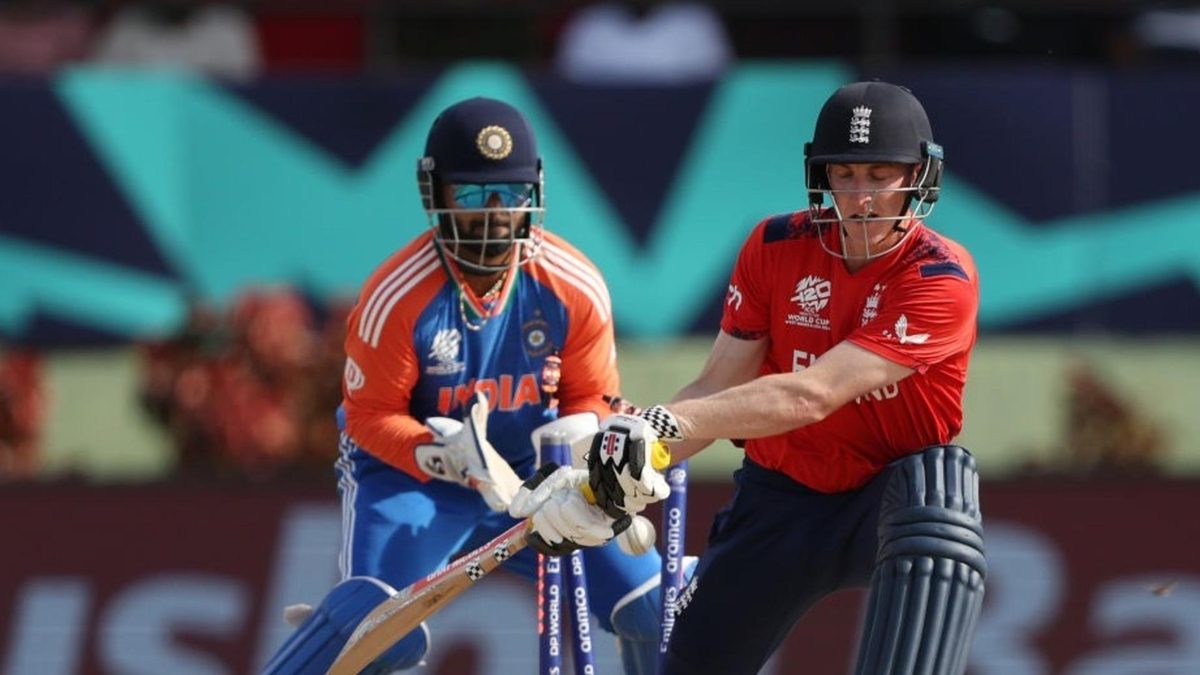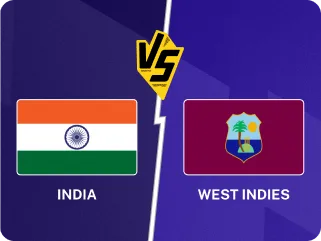
There had been a whole lot of hue and cry over India's foreknowlegde of their semi-final venue for the T20 World Cup. The integrity of the competition was questioned and that India were handed an "unfair advantage" because Guyana is the spin-friendliest venue in the Caribbean was close to the general consensus.
The other side of the argument was that India had not played at the venue for a long time, and prior knowledge didn't help them in any way, with even captain Rohit Sharma coming out to say that it was "not an advantage" for them.
By design or not though, the Guyana surface did have qualities that suited the Indian attack: low, slow, and offering a lot of grip. India were expected to deliver.
But when they finished on 171-7, minds would have flashed back to Adelaide. Same occasion, same opponents, and a score that was only three more than what they had managed at the 2022 semi-final. The conditions might have been different, but India knew they needed to be spot on with their planning and execution. England were, afterall, the defending champions and had retained most of the firepower that they had last time around.
What followed was a display of tactical brilliance that won't be forgotten any time soon.
Powerplay part one - England
Before the game, England were the only team whose opening partnership had a strike rate above 150 in the tournament. They were also the only ones to average above 40. On a wicket where India's spinners were bound to come into the game later in the innings, England desperately needed a strong start. Buttler and Salt, two of the most destructive T20 openers and both in form, were India's biggest threats.
But Buttler and Salt also have similar weaknesses: the ball coming into their bodies and not allowing them room to stay leg-side and free their arms, against pacers and spinners both. India clearly knew that and more.
Arshdeep Singh started the first over with a deep backward square leg for Salt. For Buttler, the short fine leg moved back, while sweeper cover came inside the circle to counter Buttler's trademark ramp. There was no slip for either. Jasprit Bumrah shared the new ball and started with similar fields.
It was clear India were going to take the off-side out of the equation for the two right-handers, which they did. The first two overs fetched 13 runs, of which four came through an outside edge. Every other scoring shot was through the on-side.
Arshdeep was hit for three boundaries in the third over, but only one of those was off a poor ball. However, it meant that England had raced off to 26-0 after three overs. India deployed Plan B.
Powerplay part two - India
Axar Patel was brought on for the fourth over and he struck gold immediately. Buttler premeditated a reverse-sweep and was early on it, top-edging it for Rishabh Pant to take a dolly. An uncharacteristically slow ball on off stump, Buttler was beaten by the lack of pace. After the game, Axar revealed that he "didn't want to push the pace too much" on a "slow" wicket, which the batters had told him wasn't "easy to hit on".
England promoted the left-handed Moeen Ali to No.3, presumably to counter the Axar threat and not expose Jonny Bairstow to him. The move didn't work. Bairstow had to walk out in the next over after a Bumrah special castled Salt.
Bumrah had softened Salt with a quick back-of-length ball before delivering the sucker punch in the form of a dipping, gripping off cutter that pinged his leg stump. Bairstow was beaten by a seaming beauty first ball that would make the best of Test bowlers proud. Oh wait, Bumrah is one.
Bairstow and England fans were then reminded in the sixth over that traumatic memories are not just restricted to India when it comes to Ahmedabad, when Axar knocked over the off stump with a seemingly harmless arm-ball that kept straight and stayed a touch low. Rings a bell?
After six overs and action that felt longer than that, England's score was 39-3, with the cream of their batting order back in the hut.
Kuldeep & co. hone in on the stumps
India wasted no time in bringing Kuldeep into the attack. When the fourth ball of his first over ragged from around Moeen's off stump to close to the wide line, the writing was on the wall for England.
It didn't help that Moeen practically gifted his wicket to Axar on the first ball of the eighth over by aimlessly wandering out of his crease after losing track of where the ball was.
Harry Brook put up some resistance with his sweeps, reverse sweeps, and backfoot punches, but the laser-like accuracy with which India honed in on the stumps turned out to be too hot for England to handle.
After the game, Rohit said that the discussion during the innings break had been to "try and hit the stumps as much as possible, and to keep the stumps at play". Six of the eight non-run out dismissals were either bowled or lbw, while Buttler and Moeen were also dismissed off balls in and around the stumps. It was only poetic that the last act of the match was Bumrah pinning a tailender lbw with a yorker to complete a 68-run victory.
India have thrashed England to secure their place in the 2024 T20 World Cup final 🔥
— Wisden (@WisdenCricket) June 27, 2024
Scorecard: https://t.co/g6rJlpHBxu pic.twitter.com/I0S8RJmaeC
Perhaps this is what people feared would happen when India were allotted the Guyana semi-final. The conditions looked eerily similar to the average Indian Test venue where trios of Indian spinners have been running over western batting orders for more than a decade now.
Despite the familiarity and the well-known shortcomings of the opposition, however, there was something to admire about the surgical precision with which India went about their business on the field. They have often been guilty of unravelling close to the finish line in the big tournaments, but in Guyana, they looked like they had unfinished business to tend to, and were locked in, literally and metaphorically.
Follow Wisden for all T20 World Cup updates, including live scores, match stats, quizzes and more. Stay up to date with the latest cricket news, player updates, team standings, match highlights and video analysis.








